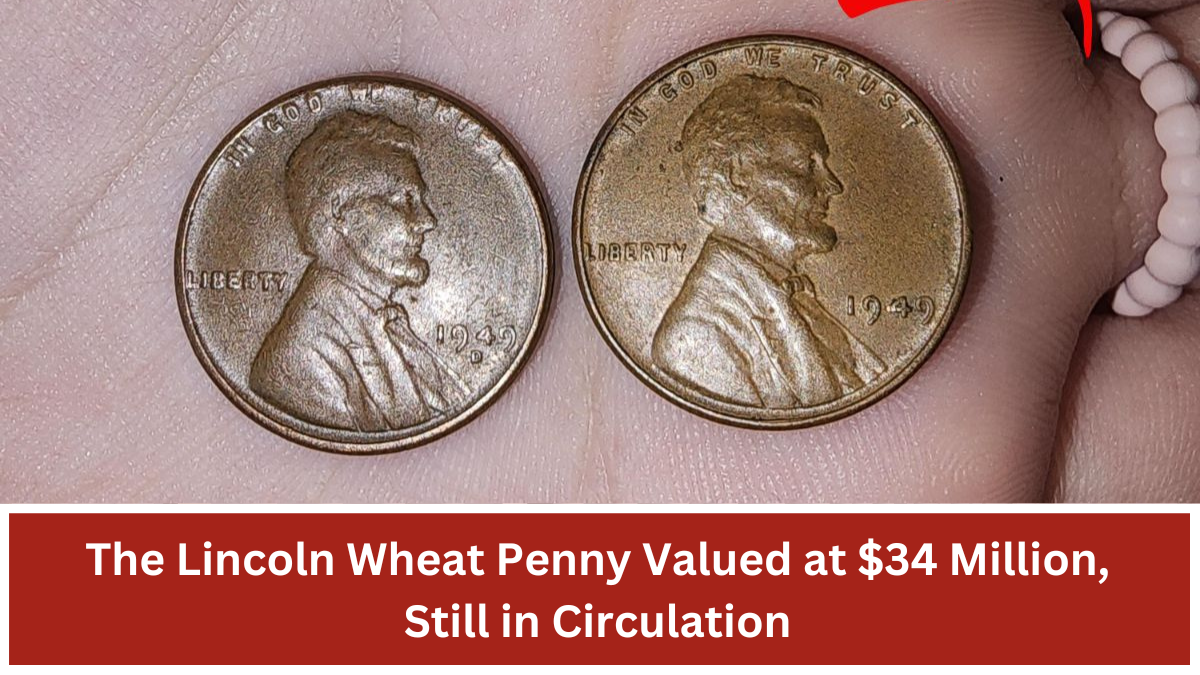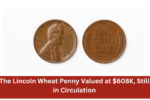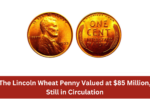The Lincoln Wheat Penny, introduced in 1909, holds a cherished spot in the history of American coinage. Collectors and numismatists worldwide covet these pennies, not just for their nostalgic appeal but also for their potential to hold extraordinary value. The idea that a penny could be worth $34 million is nothing short of astonishing, yet it underscores the rare nature of certain coins and the immense interest they generate. Let’s dive into the specifics of this fascinating piece of history and its record-breaking valuation.
The Lincoln Wheat Penny: A Brief Overview
The Lincoln Wheat Penny, often referred to as the “Wheatie,” was the first U.S. coin to feature the portrait of a president. Designed by Victor David Brenner, it replaced the Indian Head cent in 1909 to commemorate the 100th anniversary of Abraham Lincoln’s birth. The reverse side features two wheat stalks, symbolizing prosperity.
The Wheat Penny was minted from 1909 to 1958, after which it was succeeded by the Lincoln Memorial design. During its nearly 50-year production, several variations and errors occurred, which make some editions incredibly rare and valuable today.
What Makes the $34 Million Penny So Special?
The Lincoln Wheat Penny valued at $34 million is a coin collector’s dream for multiple reasons:
1. Minting Errors
One of the primary factors that elevate a coin’s value is a minting error. Misstrikes, doubled dies, or off-center designs can make certain pennies unique. The $34 million penny is rumored to be one of the rarest error coins ever produced.
2. Unique Composition
During World War II, copper was a critical resource, so in 1943, pennies were made using zinc-coated steel instead. However, a few pennies were accidentally struck on bronze planchets that remained in the minting machines. These “1943 bronze Wheat Pennies” are among the most sought-after coins.
3. Condition and Grade
The coin’s condition—often graded on the Sheldon scale—plays a crucial role in its value. Coins with a grade of MS-67 or higher (Mint State) are exceptionally rare and highly prized.
4. Provenance
The story behind a coin’s discovery and ownership also adds to its allure. A coin with a rich provenance, like the $34 million Wheat Penny, often garners significant interest at auctions.
Still in Circulation?
Although the odds are incredibly slim, some rare Lincoln Wheat Pennies—including error coins like the 1943 bronze penny—could still be hiding in circulation. Many of these coins were never officially accounted for, meaning they could turn up in an old collection or even as change from a purchase. Checking your spare change might just be worth your while!
How to Identify Rare Lincoln Wheat Pennies
Here are a few tips to spot valuable Wheat Pennies:
- Check the Date: Key dates include 1909-S VDB, 1914-D, 1922 (no mint mark), and 1943 (bronze).
- Inspect for Errors: Look for doubled dies, off-center strikes, or unusual lettering.
- Examine the Mint Mark: Coins minted in San Francisco (S) and Denver (D) often have smaller mintages and higher value.
- Assess the Condition: Use a magnifying glass to determine if the coin is in uncirculated or mint state condition.
FAQs About the Lincoln Wheat Penny
1. Why is the Lincoln Wheat Penny so valuable?
The value of a Lincoln Wheat Penny depends on its rarity, condition, and any unique features such as minting errors or historical significance. Certain pennies, like the 1943 bronze version, are exceedingly rare, driving up their value.
2. What makes the $34 million penny unique?
This penny’s extraordinary value stems from a combination of rarity, historical importance, minting error, and its impeccable condition. It is one of the most desirable coins among collectors.
3. How can I determine if I have a rare Wheat Penny?
Check the coin’s date, mint mark, and condition. Consult a professional numismatist or have the coin graded by a reputable service like the Professional Coin Grading Service (PCGS).
4. Are there still valuable Lincoln Wheat Pennies in circulation?
Yes, though rare, valuable Wheat Pennies can still be found in circulation. Many are hiding in old collections, piggy banks, or rolls of coins.
5. What should I do if I find a potentially valuable Wheat Penny?
If you believe you’ve found a rare penny, avoid cleaning it, as this can reduce its value. Instead, consult a professional appraiser or coin grading service to authenticate and assess its worth.
In conclusion, the Lincoln Wheat Penny valued at $34 million is a testament to the enduring fascination with rare coins. Whether you’re a seasoned collector or a curious hobbyist, the world of numismatics offers endless opportunities for discovery. Who knows? The next time you examine your pocket change, you might just strike gold—or, in this case, copper!





